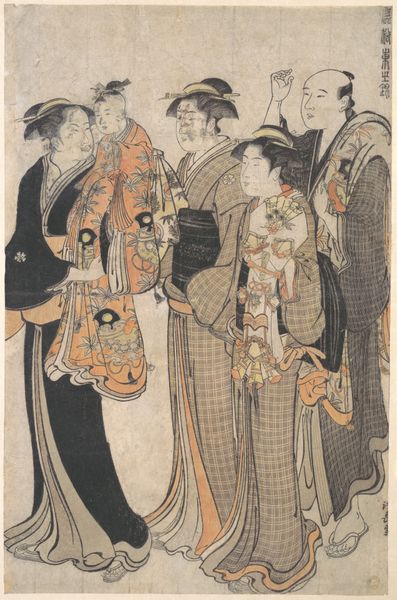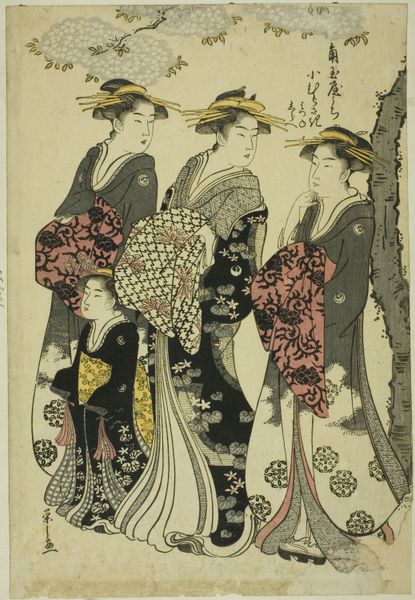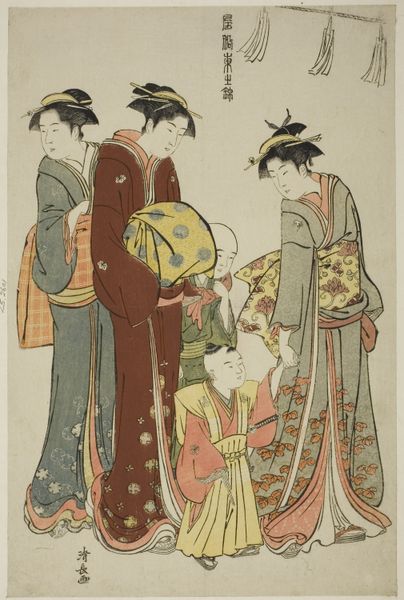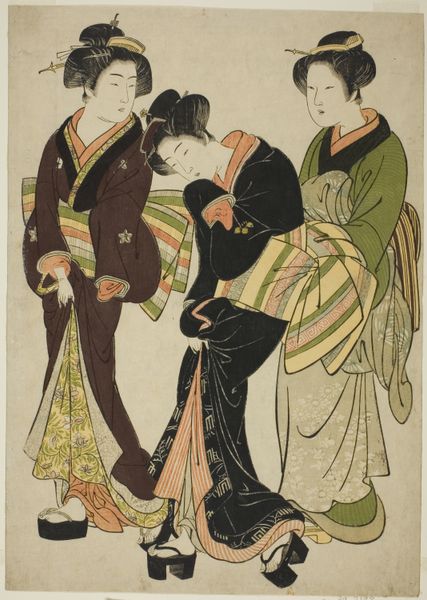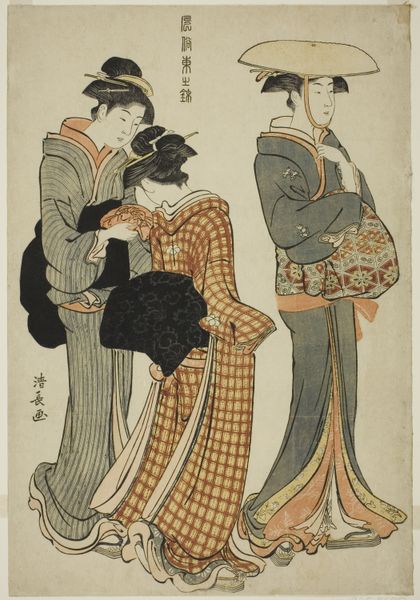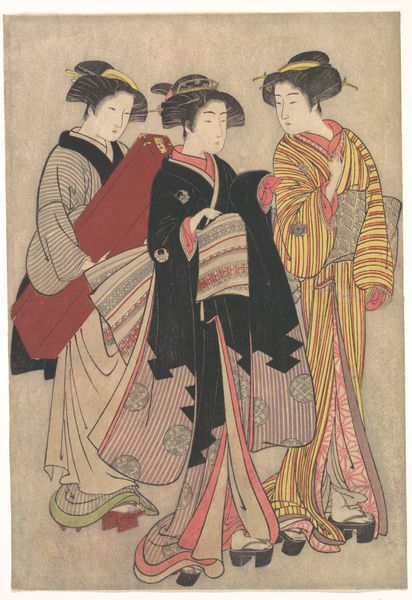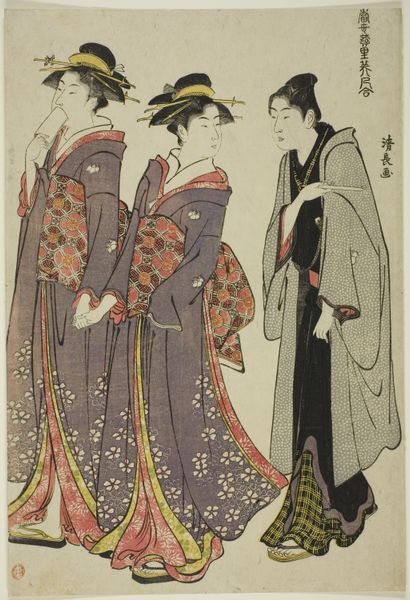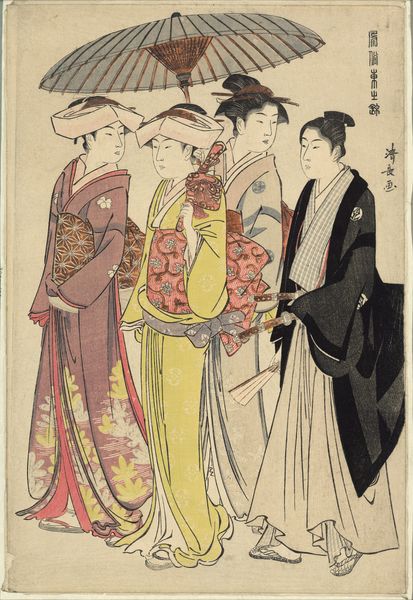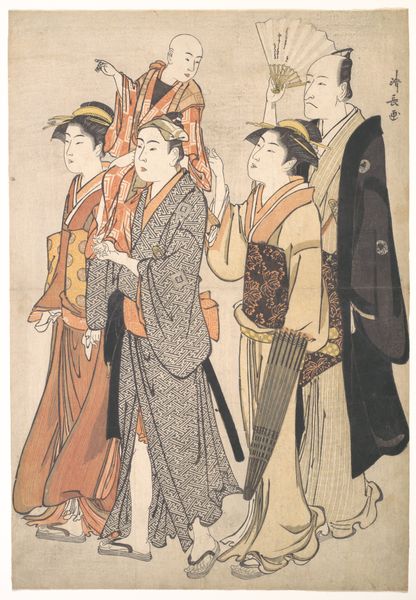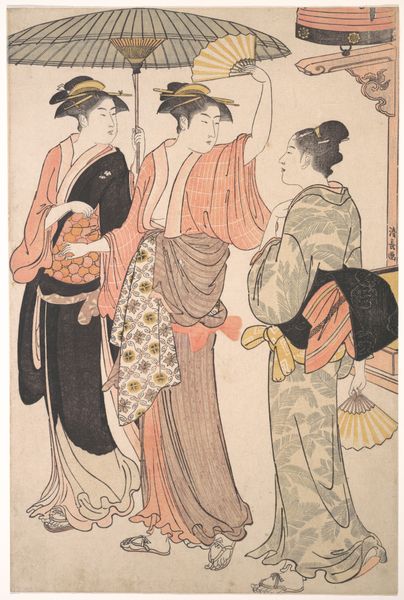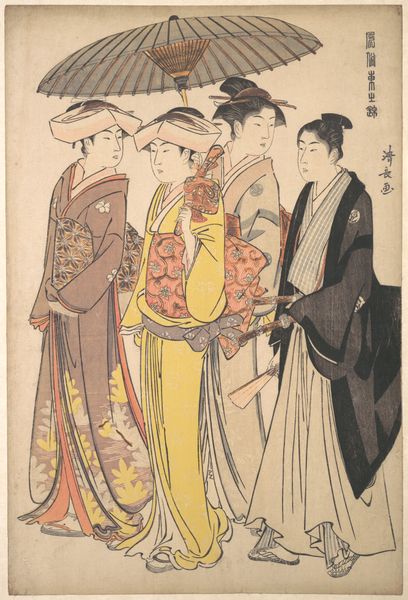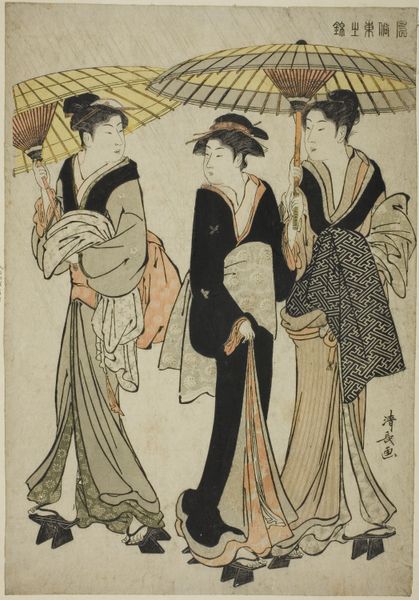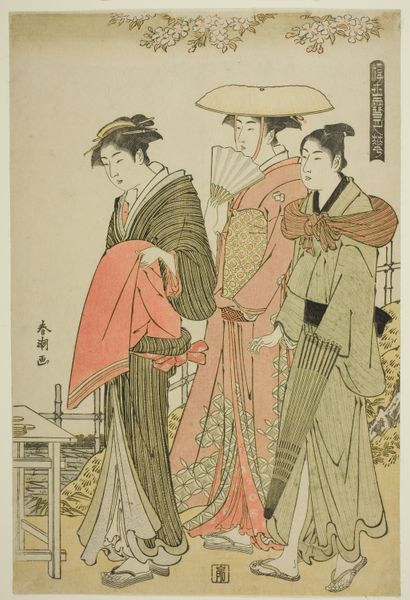
Kamioki, from the series "A Brocade of Eastern Manners (Fuzoku Azuma no nishiki)" c. 1783 - 1784
0:00
0:00
print, woodblock-print
# print
#
asian-art
#
ukiyo-e
#
figuration
#
woodblock-print
#
genre-painting
Dimensions: 35.6 × 25.2 cm
Copyright: Public Domain
Curator: Welcome. Today we’re looking at "Kamioki, from the series "A Brocade of Eastern Manners (Fuzoku Azuma no nishiki)"" a woodblock print crafted around 1783-1784 by Torii Kiyonaga. Editor: The elegant stillness is striking. These figures are flattened, yes, but they fill the space with subtle variations of texture and pattern. The clothes define the characters, it's not exactly a portrait but I still get a sense of the people wearing them. Curator: It certainly gives us a window into the fashions and customs of the Edo period. Kiyonaga, as a leading ukiyo-e artist, was capturing contemporary life for the merchant class, these people are likely upper-class merchants enjoying leisure time. We can gather social clues, like family status and the celebration of Kamioki from details of attire. Editor: I am drawn to the patterns in their robes and sashes. You can see the fine lines in the prints and admire how that repetition is crucial to establishing depth and form, while ultimately creating such distinct silhouettes through considered arrangement of lines and colors. Curator: Absolutely. Woodblock printing demanded meticulous work, from the initial design to the carving of the blocks and careful layering of colours. And while the ukiyo-e genre often depicted courtesans and actors, Kiyonaga emphasized more everyday scenes, bringing his figures out of interior settings and portraying them amid natural settings, engaging with customs of the period. Editor: I wonder about the workshop dynamics involved. Were these artists working directly with the artisans and craftsmen to achieve these subtleties in tone and color or where they providing technical specifications from a distance? I am fascinated by the interplay between artistry and skilled labor, which tends to disappear when we just talk about the name of the artist. Curator: An important point, the commercial success of prints like these involved teams of block carvers and printers. Kiyonaga oversaw the process, yes, but we must not forget those crucial skilled artisans who helped him realize his creative vision. It points to an exciting intersection between high and low art, where craftsmanship and creativity meet commercial demand. Editor: Well, I have gained a renewed appreciation for how much work, materials and process go into an apparently "simple" print, especially because of the emphasis that Kiyonaga placed on materials that evoke details about the world of its time. Curator: And I hope this has provided some insights into how woodblock prints helped shape and reflect the social values and aspirations of the Edo period, illustrating how a medium gained prominence for its accessability and widespread availability, helping disseminate a style of aesthetics that prevails today.
Comments
No comments
Be the first to comment and join the conversation on the ultimate creative platform.
